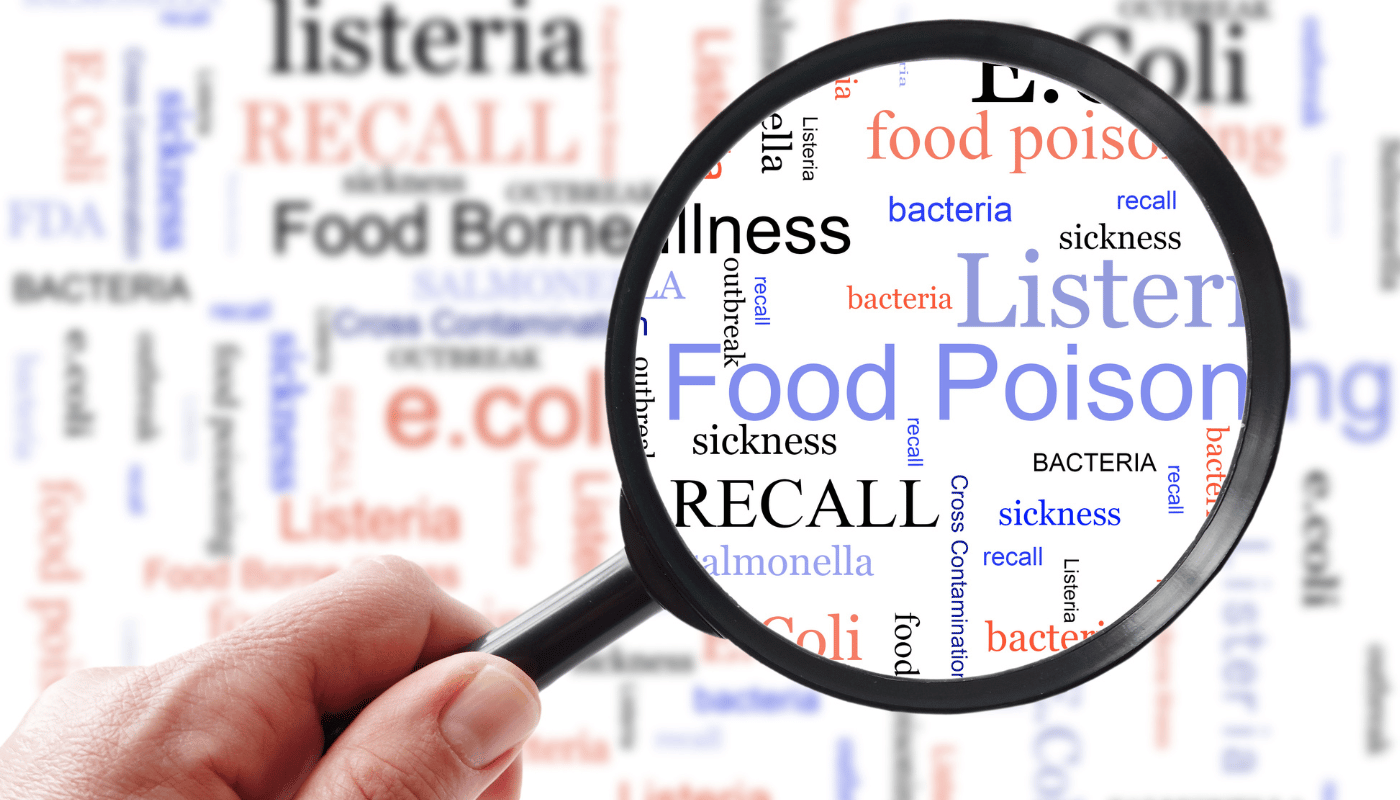Food safety is paramount in maintaining public health and preventing outbreaks of foodborne illnesses. But what strategies can food handlers employ to ensure they are not contributing to poor food safety practices? This article delves into the best methods for preventing mishaps in food handling, offering insights that are both practical and essential for anyone involved in the food service industry. Join us as we explore effective solutions to keep your food safe and your customers healthy.
Implementing Strict Personal Hygiene Standards
Ensuring the safety of food begins with the implementation of strict personal hygiene standards among food handlers. This fundamental approach is paramount in preventing contamination and the spread of foodborne illnesses. Personal hygiene encompasses a broad spectrum of practices, from hand washing to maintaining clean uniforms, which collectively create a barrier against the infiltration of pathogens into food products. The effectiveness of these measures is significantly enhanced when food handlers adopt them as non-negotiable daily routines.
One of the critical components of personal hygiene is the regular and thorough washing of hands. This simple, yet powerful, practice is the first line of defense in breaking the chain of infection. Food handlers should wash their hands with soap and warm water for at least 20 seconds, especially after using the restroom, handling raw food, touching waste, or engaging in any activity that could contaminate their hands. Additionally, the use of gloves does not substitute for hand washing; it is a complementary precaution that further minimizes the risk of contamination.
Maintaining a clean and professional appearance is equally important. This includes wearing clean uniforms or aprons, keeping hair covered, and ensuring that any cuts or wounds are properly covered with waterproof bandages. These measures not only protect the food from contamination but also enhance the overall hygiene of the food preparation environment. In settings where food is prepared and served, personal hygiene practices become the cornerstone of food safety protocols, underscoring the critical role of food handlers in safeguarding public health.
Further Insights on Personal Hygiene Standards
Delving deeper into the sphere of personal hygiene, food handlers must also be vigilant about their health status. Reporting illnesses, especially those that are infectious, is crucial in preventing the spread of diseases through food. Conditions such as colds, flu, or gastrointestinal issues can easily compromise food safety, making it imperative for affected individuals to avoid handling food until they are fully recovered.
Comprehensive Training Programs
Comprehensive training programs play a crucial role in enforcing personal hygiene standards. These programs should cover the fundamentals of food safety, the importance of personal hygiene, and the specific practices required in their daily routines. By fostering a culture of cleanliness and responsibility, food establishments can significantly reduce the risk of foodborne illnesses, ensuring that both staff and patrons are protected.
- Regular and thorough hand washing with soap and warm water.
- Use of gloves as a supplementary measure to hand washing.
- Maintaining clean uniforms and personal appearance.
- Covering hair and any cuts or wounds with appropriate coverings.
- Reporting and managing personal health issues promptly.
Implementing strict personal hygiene standards is not just about adhering to regulations; it’s about fostering a culture of safety and respect for the well-being of both employees and customers. The collective effort in maintaining these standards can significantly mitigate the risks associated with foodborne illnesses, making it a critical aspect of food safety management.
Unlocking the Key Strategies for Optimal Food Safety Among Food Handlers
Ensuring food safety is a paramount concern that requires vigilant practices and comprehensive knowledge among food handlers. The cornerstone of preventing poor food safety lies in the education and training of these individuals. Food handlers must be well-versed in the principles of food hygiene and safety, from understanding the dangers of cross-contamination to recognizing the critical temperatures for storing and cooking food.
Another vital aspect is the enforcement of strict personal hygiene practices. This includes regular hand washing, using gloves when appropriate, and avoiding work when ill. These practices are not just recommendations; they are essential steps in safeguarding against the spread of foodborne illnesses. Moreover, the implementation of a Hazard Analysis and Critical Control Points (HACCP) system can dramatically enhance food safety. This proactive approach identifies potential hazards and establishes critical limits at each step of food preparation and handling, ensuring that risks are minimized.
Lastly, maintaining a clean and sanitary work environment is crucial. This involves regular cleaning and sanitizing of surfaces, utensils, and equipment, alongside effective pest control measures. Such environments discourage the proliferation of pathogens and contribute significantly to food safety.
Further Insights on Enhancing Food Safety Practices
Adopting innovative technologies and methodologies can also play a pivotal role in advancing food safety. For instance, digital temperature monitoring and blockchain for traceability are emerging as powerful tools in the fight against foodborne diseases. These technologies not only improve efficiency but also offer unprecedented levels of transparency and accountability in food handling processes.
| Strategy | Benefit | Implementation |
|---|---|---|
| Education and Training | Improves knowledge and practices | Regular workshops and certifications |
| Personal Hygiene | Reduces contamination risk | Handwashing protocols, glove use |
| HACCP System | Minimizes hazards | Identify critical points, monitor and control |
| Sanitary Work Environment | Prevents pathogen growth | Cleaning, sanitizing, pest control |
| Technology Adoption | Enhances safety and transparency | Use of digital tools for monitoring and traceability |
Conducting Regular Food Safety Training
Ensuring the safety of food is a paramount concern in any food service establishment. One of the most effective strategies for preventing poor food safety practices among food handlers is conducting regular food safety training. This proactive approach not only equips staff with essential knowledge about handling, preparing, and storing food safely but also fosters a culture of food safety that permeates throughout the organization. By keeping food handlers up-to-date with the latest food safety regulations and practices, businesses can significantly reduce the risk of foodborne illnesses.
Regular training sessions serve as a reminder of the critical role each food handler plays in maintaining high standards of food safety. These sessions can be tailored to address specific issues within the establishment, such as cross-contamination, proper cooking temperatures, and personal hygiene practices. Engaging and interactive training methods, such as hands-on demonstrations and quizzes, can enhance the learning experience, ensuring that knowledge is not only acquired but retained. Furthermore, making food safety training a mandatory part of the onboarding process for new employees ensures that they start on the right foot, fully aware of the importance of their role in preventing foodborne illnesses.
Another key advantage of regular food safety training is the opportunity it provides for feedback and discussion. This open forum allows staff to share their experiences, raise concerns, and suggest improvements, creating a collaborative environment where everyone is committed to maintaining the highest standards of food safety. Ultimately, regular food safety training is an investment in both the staff’s professional development and the business’s reputation for providing safe, high-quality food.
Enhancing the Effectiveness of Food Safety Training
Implementing Advanced Training Techniques and Technologies
- Utilizing interactive e-learning platforms for flexible training schedules.
- Incorporating virtual reality (VR) to simulate real-life food safety scenarios.
- Developing role-playing exercises to practice response to food safety incidents.
- Offering certification programs to encourage continuous learning and improvement.
- Collecting and analyzing feedback from participants to refine training methods.
When it comes to conducting regular food safety training, it’s crucial to keep the content relevant and engaging. The use of advanced training techniques and technologies can play a significant role in enhancing the learning experience. By leveraging interactive e-learning platforms, virtual reality simulations, and role-playing exercises, trainers can create a more immersive and effective training program. These innovative approaches not only make learning more enjoyable for food handlers but also improve their ability to apply food safety practices in real-world scenarios. Continuous improvement of training methods, guided by participant feedback, ensures that training remains effective and aligned with the latest food safety standards and regulations.
Ensuring Proper Food Storage and Handling
One of the most critical aspects of maintaining high standards of food safety is understanding and implementing effective food storage and handling practices. At the core of preventing contamination and foodborne illnesses, these practices are essential for both food handlers in professional settings and individuals preparing meals at home. The key to success lies in awareness and diligence, ensuring that all food items are stored and handled under conditions that thwart the growth of harmful pathogens.
Proper food storage begins with categorizing food items based on their storage requirements. Perishable goods, such as dairy products, meats, and prepared meals, must be refrigerated or frozen promptly to inhibit bacterial growth. Conversely, dry goods like grains, nuts, and spices should be kept in cool, dry places. It is paramount to ensure that the storage areas are clean and well-organized to prevent cross-contamination, with ready-to-eat foods stored above raw foods to avoid harmful drips.
Handling food safely involves more than just storage; it encompasses the entire process from purchasing to serving. This includes washing hands thoroughly with soap and water before and after handling food, using separate cutting boards and utensils for different types of food (especially raw meats versus vegetables), and cooking foods to their recommended temperatures to kill any present bacteria. Awareness and adherence to these practices can significantly reduce the risk of foodborne illnesses.
Additionally, it’s important to keep in mind several key points for ensuring food safety:
- Regularly check the temperatures of refrigerators and freezers.
- Use airtight containers to store leftovers.
- Label and date all stored food items.
- Discard any food that looks or smells questionable.
- Stay informed about food safety recalls and alerts.
Incorporating these practices into daily routines can greatly enhance food safety, protecting both individuals and the wider community from the dangers of foodborne diseases. By prioritizing proper food storage and handling, we can all contribute to a safer, healthier eating environment.
Utilizing Correct Cleaning and Sanitization
Ensuring food safety involves a comprehensive approach where correct cleaning and sanitization play a pivotal role. It’s not just about removing visible dirt or debris but about eliminating microbes that could cause foodborne illnesses. Utilizing the right cleaning agents and methods can make a significant difference. For instance, while cleaning removes particles, sanitization goes further to reduce bacteria to safe levels. It’s crucial to follow manufacturer instructions for cleaning agents and sanitizers to ensure their effectiveness.
Moreover, the importance of training cannot be overstated. Food handlers should be well-versed in both the theory and practice of proper sanitization techniques. This includes understanding the difference between cleaning, sanitizing, and disinfecting and knowing when each is appropriate. Regular audits and reminders can help maintain high standards. Additionally, establishing a routine for cleaning and sanitizing equipment and surfaces ensures that no area is neglected and that contaminants do not have the opportunity to spread.
Further Context on Cleaning and Sanitization Practices
In the realm of food safety, implementing an effective cleaning and sanitization schedule is non-negotiable. This schedule should outline specific tasks, frequencies, and responsible individuals. It’s also vital to adapt cleaning protocols to address different areas within a food service establishment, recognizing that kitchens, dining areas, and restrooms each have unique requirements. Personal hygiene, including regular handwashing, wearing clean uniforms, and using protective gear, also falls under this broad umbrella of sanitization efforts. Ultimately, the goal is to create an environment where safety is the norm, and risks are systematically minimized.
- Differentiate between cleaning, sanitizing, and disinfecting
- Follow manufacturer’s instructions for cleaning agents and sanitizers
- Implement a comprehensive training program for food handlers
- Establish a routine cleaning and sanitizing schedule
- Adapt protocols to suit various areas of the establishment
Monitoring and Enforcing Food Safety Policies
Ensuring the safety of food is a paramount concern in both the food industry and public health sectors. One of the most effective strategies for preventing poor food safety practices among food handlers is through the rigorous monitoring and enforcing of food safety policies. By establishing a set of comprehensive guidelines that cover everything from personal hygiene to food storage and preparation, businesses can create an environment where food safety becomes a top priority.
However, the existence of policies is not enough on its own. The key to their success lies in their consistent application and enforcement. This means conducting regular training sessions to ensure that all food handlers are aware of the policies and understand their importance. It also involves performing periodic inspections to verify compliance and taking corrective actions when necessary. Through these measures, businesses can significantly reduce the risk of foodborne illnesses and protect both their customers and reputation.
Further Insights into Monitoring and Enforcing Food Safety Policies
Delving deeper into the concept of monitoring and enforcing food safety policies, it becomes clear that active engagement and commitment from all levels of an organization are crucial. This includes not only the food handlers themselves but also management and supervisors who play a key role in overseeing the implementation of these policies. By nurturing a culture of food safety that values continuous improvement and accountability, businesses can foster an environment where safe food handling practices are ingrained in the daily operations.
Another Perspective on Food Safety Policies
When considering the enforcement of food safety policies, it’s also important to recognize the role of technology and data in enhancing these efforts. Modern tracking and reporting systems can provide valuable insights into compliance levels, identifying areas for improvement and helping to ensure that food safety standards are consistently met. By leveraging technology, businesses can streamline their monitoring processes and respond more swiftly to potential issues, further safeguarding against the risks of foodborne illnesses.
- Development of comprehensive food safety policies
- Regular training and education for food handlers
- Periodic inspections and audits to ensure compliance
- Corrective actions for any violations identified
- Leveraging technology to enhance monitoring and enforcement efforts
In conclusion, the prevention of poor food safety practices among food handlers is an ongoing challenge that requires diligent monitoring and enforcement of food safety policies. By committing to these efforts and continuously seeking ways to improve, businesses can play a crucial role in protecting public health. The journey toward enhanced food safety is a collective one, involving the participation and cooperation of everyone involved in the food supply chain.

Seasoned writer and casino expert with over eight years of experience in the gambling industry. Specializing in online casino reviews, game strategies, and industry trends, Nathan provides in-depth insights that help players make smart decisions. His work is known for its clarity and thoroughness, making complex topics accessible to both novice and experienced players.







